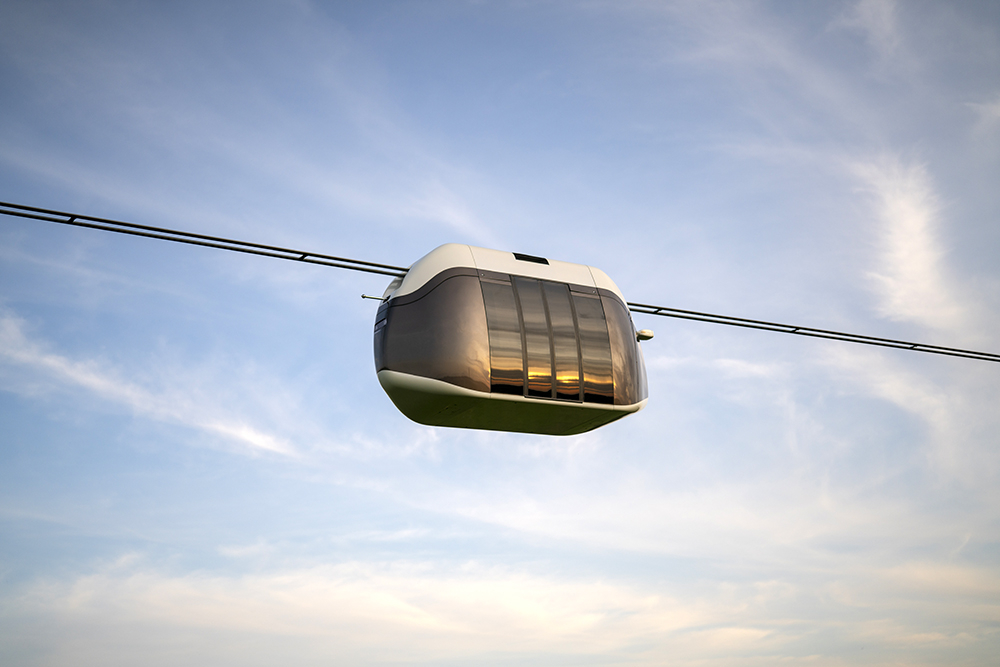Principles of operation and energy consumption
Regarding a cable car, the cable and the cabin move together with the help of an electric motor. This requires a lot of energy. At the same time, the costs are the same for transporting 10 people or 1000 people. Such a system is effective only during peak hours. Another disadvantage of the cable car is rapid wear of the carrier cable. It needs to be changed in every 6-8 years. Also, the length of the cableway does not usually exceed 10 km.
On the contrary, string transport uses electric vehicles on steel wheels that are controlled by artificial intelligence and move along rails above the ground, using their own engine. Due to low aerodynamic resistance, such machines are highly energy efficient. The track structure of string transport can serve for 100 years. Wherein, the length of the path is unlimited.
Speed and load capacity
The UST Inc. electric vehicles can accelerate up to 150 km/h. This allows you to use them as a full-fledged public transport on urban and intercity routes. The speed of the cable car is only 20-30 km/h. Such transport is suitable for solving certain problems. For example, to connect parts of the city that are separated by a river.
In addition, the cable car cabins can accommodate a maximum of 50 people, whereas string transport can carry hundreds of passengers in one train. In combination with high speed, this provides a carrying capacity like the subway — 50,000 people per hour. The cable car's responding figure is only 3000 people per hour.
Application methods
UST Inc. offers several types of tracks and transport models that can be combined depending on the specific project. Cable car manufacturers do not have such a selection. Cabins are limited in shape, dimensions and functionality. Therefore, cable cars are mainly used in the mountains and less often in cities to surpass water barriers.
Safety
Emergency situations often happen on cableways. This is mainly due to cable wear and bad weather conditions. The UST Inc. engineers have taken such dangers into account:
‒ String transport is able to work despite strong winds, icing, snowfall, fog, heavy rains, sandstorms and flooding.
‒ The transport is equipped with an intelligent system that reads what is happening on the track and monitors the fulfillment of the route task. This eliminates the human factor and reduces the risk of accidents.
‒ The supporting elements of the string transport complex have a tenfold margin of safety, which makes them resistant to terrorism and vandalism.
‒ Unlike a cable car, string transport does not use a cable, but a rail, which consists of bundles of steel wire, filler and sheath. Each of these elements makes the structure stronger.
Thus, the cable car and string transport — these are two completely different systems. If one has occupied its niche long ago and is unlikely to be used in a new way, then the other can seriously compete with traditional modes of transport.

